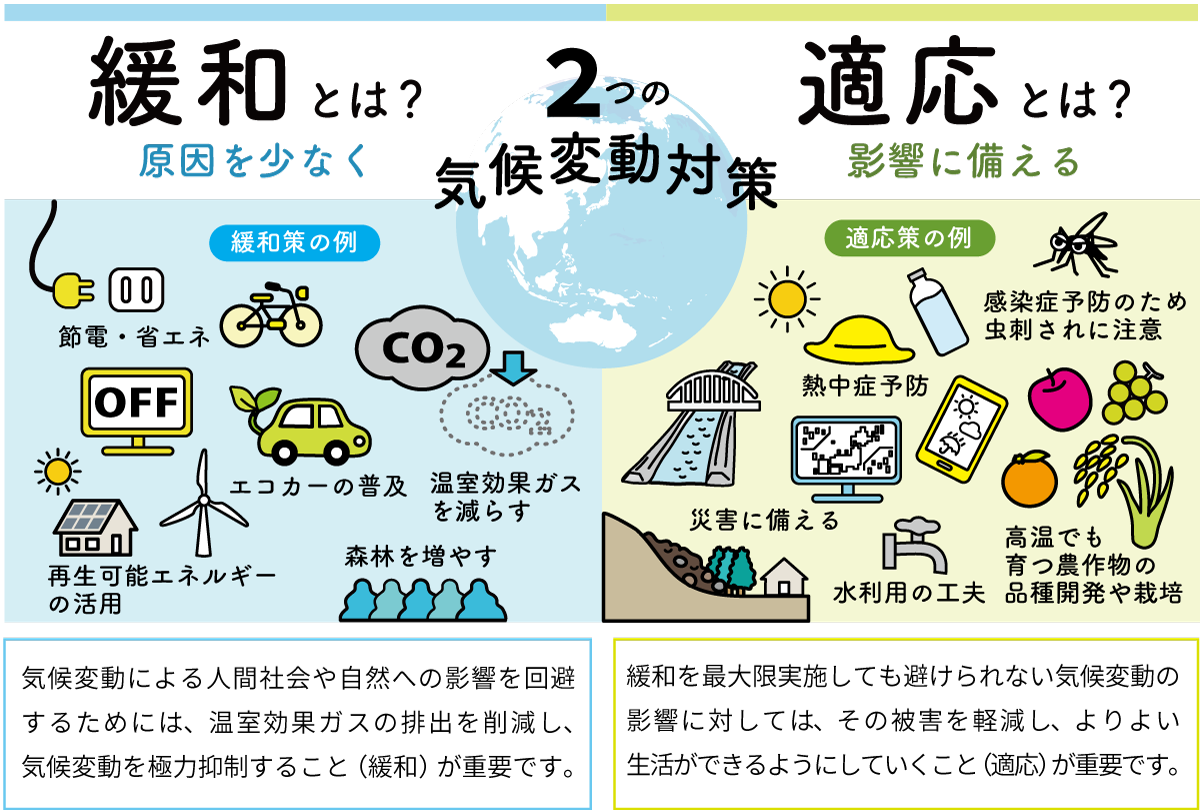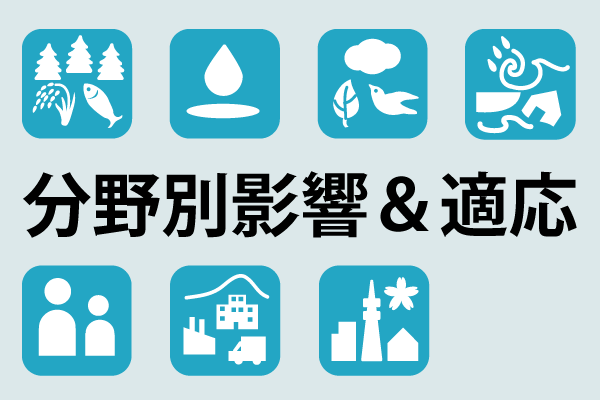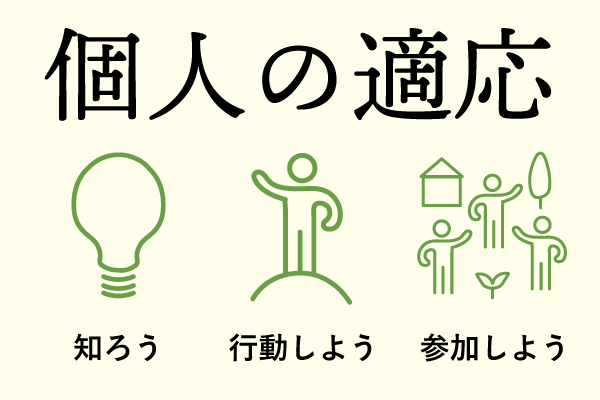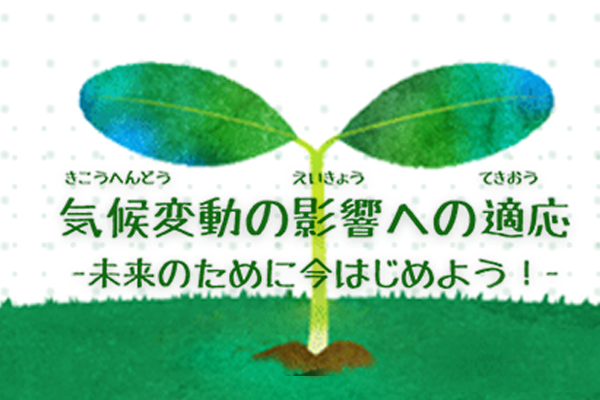Climate change and adaptation
An easy-to-understand explanation of "climate change adaptation". Here are some examples.
What is climate change adaptation?
Have you ever heard the words "adaptation to climate change impacts" and "adaptation measures"?
The impacts of climate change are already evident in many parts of our lives. Effects on agricultural crops due to temperature rise, strong rainfall exceeding past observations, natural disasters due to large typhoons, and health effects such as an increase in the number of heat stroke carriers, etc.
In addition to the widely known "mitigation measures," such as efforts to reduce greenhouse gas emissions, it will be important in the future to implement "adaptation measures" to deal with the effects of climate change that are already occurring.

What exactly is referred to as "adaptation"? Here are a few examples.
Example 1: "Adaptation" to Protect Food
Rising temperatures have already caused deterioration in quality, such as white immature grains in rice, tanning of apples, floating skin of mandarins, and tearing of tomatoes. "Adaptation" includes switching to rice varieties that are more resistant to high temperatures, changing the planting season, and protecting apples and tomatoes from strong sunlight with sunshades.

Example 2: Adaptation to Protect against Meteorological Disasters
There has been an increase in the number of heavy rainfall events that have surpassed past observations.※1 “Adaptation" also includes building infrastructure and strengthening warning and evacuation systems to prevent river flooding, sewer overflow (inland water flooding), and flooding damage caused by heavy rain. Protecting ourselves from weather disasters by checking weather forecasts, disaster prevention apps, hazard maps (flood damage forecast maps), and evacuation routes is also a good form of adaptation.

Example 3: Adaptation to Protect Health
Japan's annual average temperature has increased at a rate of 1.26 degrees Celsius per 100 years between 1898 and 2020, and especially since the 1990s, years with high temperatures have become more frequent. This has led to an increase in the number of people brought in by emergency personnel due to heat stroke, and the northward spread of mosquitoes that carry infectious diseases. It is also important for each of us to protect our own health by staying hydrated, keeping the temperature of the air conditioner at a moderate level to prevent heat stroke, and being careful of insect bites.

There are still many other "adaptations" besides these.
We believe there are countless new "adaptations" that will emerge in the future.
Source
- ※1Ministry of Education, Culture, Sports, Science and Technology, Ministry of Agriculture, Forestry and Fisheries, Ministry of Land, Infrastructure, Transport and Tourism, Japan Meteorological Agency, "Integrated Report on Climate Change Observation, Prediction and Impact Assessment 2018 - Climate Change in Japan and its Impacts", p. 37.
- ※2Japan Meteorological Agency
A New Society Created by "Adaptation”
It is true that "adaptation" has many aspects, such as measures to prepare for new damage and major disasters caused by climate change, but it also has potential elements, such as the development of new businesses that can be useful to society if companies, for example, take a proactive approach.
In addition, Japan's development of new technologies and initiatives related to "adaptation" can also contribute to other countries and regions. In particular, Japan is expected to play an important role in the Asia Pacific region.
Each and every one of us should deepen our understanding of "adaptation" and take action, which is not only necessary for the future generations of Japan, but also very important for people all over the world.




